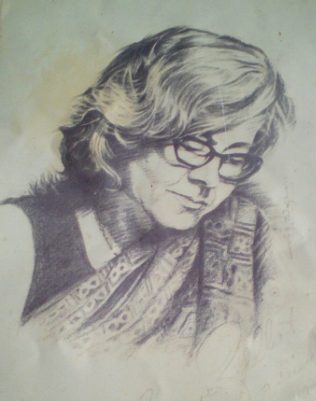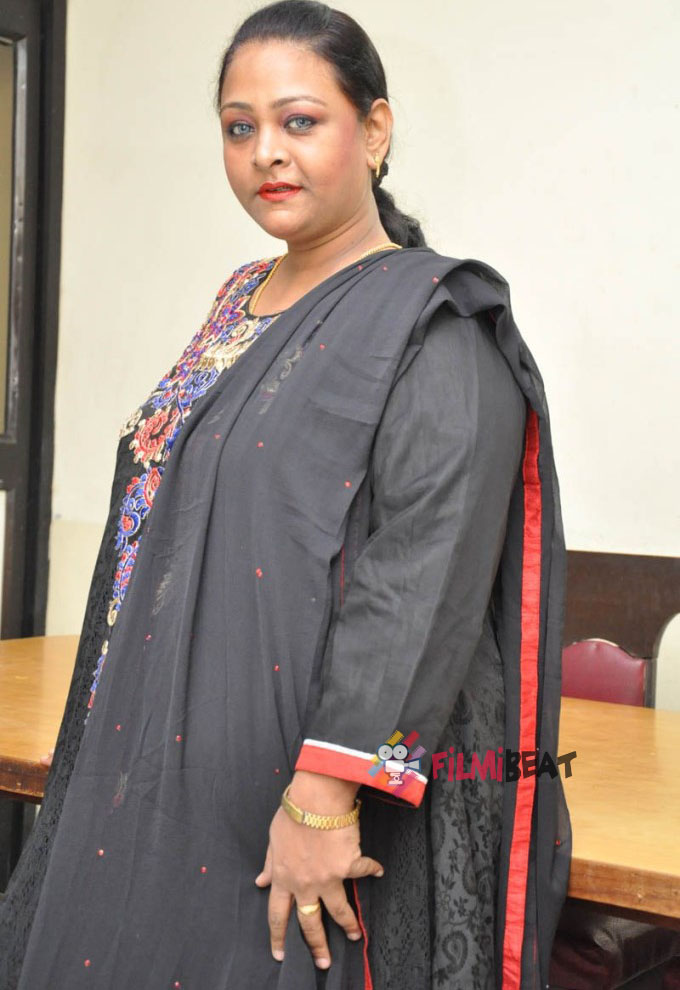Mangesh Dahiwale

Portrait of Dr. Eleanor Zelliot by Sudhir Waghmare
Just after the sad demise of Babasaheb Ambedkar in 1956, Eleanor Zelliot came to India in the 1960s to conduct her field work for her PhD dissertation. She was pursuing her PhD in history. Those were the days when the Sun was just gone beyond the horizon, but his impact was felt everywhere and was alive. Eleanor came as a scholar to study Ambedkar and his movement, but in the end, she dedicated herself to serve Ambedkar and his movement. Her life is a remarkable journey of one person and her determination to help the cause of liberation of India’s untouchables from the shackles of the caste system. Together with Gail Omvedt, they form the shining binary stars in the constellation of Ambedkarite movement.
When she started conducting her field work in Maharashtra, she lived in the villages among the villagers and as one of them. She lived in Maharwadas and conducted many interviews of the people who worked with Babasaheb Ambedkar and documented them. It was fun and delight to hear stories of her field work in those days. She always sprinkled her communication with her sharp and timely wit and humor.
She got her PhD dissertation submitted as “Ambedkar and Mahar movement”, and later on she became very unhappy with the unfortunate title of “Mahar movement”. She was aware of the all India movement, but somehow she could not cover the entire Ambedkarite movement in her thesis, the shortcoming she wanted to overcome in her four decades of dedication to the movement in India and through publishing many papers and essays on various dimensions of Babasaheb Ambedkar and his movement. Her thesis was not published for a long time. She became largely popular in the Ambedkarite movement through her papers, some of them were compiled in the book “From untouchables to Dalits”, and her talks delivered all over Maharashtra in fluent Marathi.
I would be always delighted and happy with the small part that I played in getting her thesis published, but I will share that story later. She tried to cover as much ground as possible in exploring, studying, and documenting Ambedkarite movement. The book “from untouchables to Dalits” is just the tip of iceberg of papers and essays she wrote on Babasaheb Ambedkar and his movement. She had in her writings, for example, also documented “from the Dalits to Buddhists”. I used to urge her to publish all her papers which would certainly be compiled into a couple of books. But during those days when the copies were printed and sent to seminars and conferences, and there were no soft copies. She had lost track of many of her papers and essays.

Mangesh with Eleanor Zelliot
Besides contributing to the academic and scholarly work on Babasaheb Ambedkar, she initiated many young Americans to study Babasaheb Ambedkar and his movement. I know many people who were directly inspired by Eleanor Zelliot to study Babasaheb Ambedkar and his movement. The burgeoning interest in Ambedkar studies abroad is one of the great gifts of Eleanor Zelliot to the Ambedkarite movement. There is a network and informal association of scholars that Eleanor activated and encouraged. Through American Institute of Indian Studies (AIIS), she got many young Americans to study Marathi and various aspects of Ambedkarite movement. She contributed to the development of AIIS which is one of the major refuge for the scholars in America even today.
Eleanor developed lifelong friendships with Ambedkarite people and communities. She used to travel regularly and extensively in India, particularly Maharashtra. Her Quaker background made her a relentless fighter for peace and social justice. She had zero tolerance for hypocrisy in the name of religion and she remained fighter for the cause of liberation till the end of her life. Her good friends included the Moon couple. Vasant Moon Saheb and Minaxi Moon hosted her in Nagpur. Without the Moon couple, Eleanor, and Gail, it would have been difficult to get the documented Ambedkarite movement. The highest mark of their collaboration was the English translation of Vasant Moon’s autobiography “Vasti” which was translated by Gail Omvedt as “Growing up as an Untouchable” and the preface written by Eleanor Zelliot. It is a shining document of struggle and movement.
She was a good friend and mentor to me. I first came to know her through emails which she wrote in the Buddhist circles and other egroups. She coined a word for the likes of young Ambedkarites like us “Digital Dalits”. She used to read every single email with interest and write whenever she could with her unparalleled intelligence and wisdom. She introduced many people and many ideas then through her communication. In fact, I owe one of my first publications of an essay to Eleanor Zelliot, which was a very small article on Guru Ravidas. So when she came to New Delhi, we organized a program in Ashoka Mission. It was great to see Eleanor and Gail together; two grandmothers of Ambedkarite movements. By the way she never used to like to be addressed that way, and she used to warn me to call her “Maushi” in Marathi which means “Maternal aunt”.
I wanted to read her PhD thesis which was not available then and she was very shy about the unfortunate title. She sent a copy of that in 2003. It is really an important work. She didn’t want the title and she was reluctant to publish it. Mr. Rawat of the Blue Moon publication was my friend and we worked on republishing a book of Lakshmi Narsu: The History of Caste. I showed him the thesis and he was immediately interested. We got that book published as “Ambedkar and the Untouchable movement” then, now that book is republished by Navayana as “Ambedkar’s World”: better title than the original one!!
Her compassion was exemplary. In 2007, Maitreyanath and I went to tour USA to talk about our work. Eleanor was supportive of this initiative. She was in her late 70s then and she didn’t drive the car at all. But, on that day, though she was old, fragile, and not well, she came to the airport to receive us and drive us to her home. That face full of radiance, compassion, and warmth is difficult to forget ever. She lived as the part and parcel of the Ambedkarite movement and she will be long remembered for her commitment to the movement in India. For the service she had rendered to the people of India, particularly to India’s discriminated communities, she deserves the highest honor of the land. She has already earned a place of respect and reverence in the hearts of millions of Ambedkarites.
~~~
Portrait courtesy: Gouri Patwardhan










